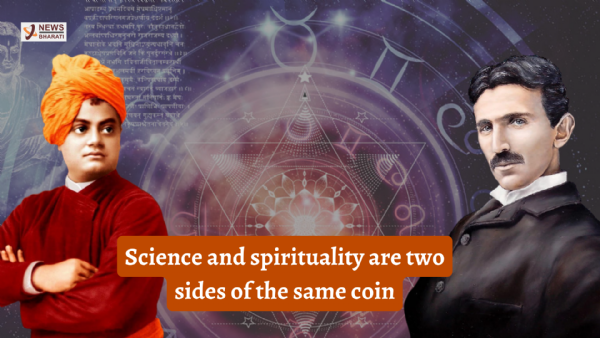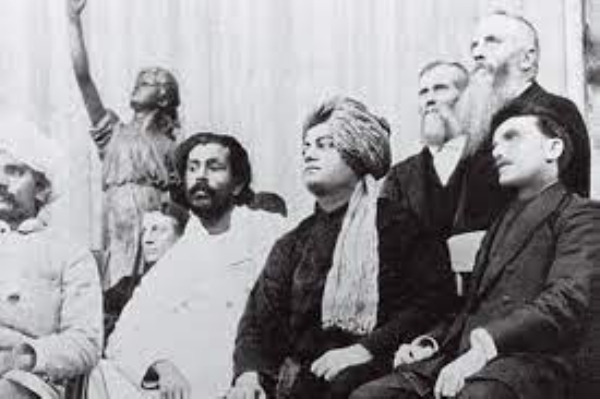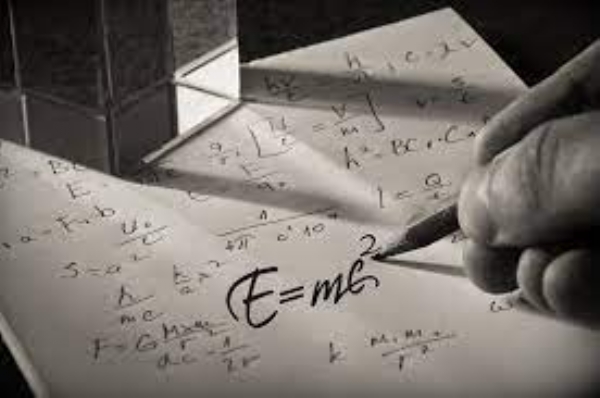Swami Vivekananda- A Monk And A Man Of Science
We can also say that Vivekananda Ji was the bridge between science and religion. He had a very immense contribution to the field of science.
Total Views |
"Science and spirituality are two sides of the same coin"-Swami Vivekananda
Whenever we think or hear the name of Swami Vivekananda, we always remember his famous speech, which he gave in Chicago in 1893 and won the hearts of everyone. We remember him as a monk, philosopher, rational thinker, influencer, spiritual and religious leader, but very few people know that Swami Ji had great scientific knowledge.

Unlike other monks who separated science and spirituality, Swami Vivekananda always saw science and spirituality as complementary. He was the monk who always saw religion through the prism of science. According to him, science and spirituality complement each other. We can also say that Vivekananda Ji was the bridge between science and religion. He had a very immense contribution to the field of science. He did not invent anything, but he influenced many people by using Vedas, which aided their inventions. One such person is Nikola Tesla.
Yes! Tesla, as is now well known, was a better inventor than Edison, and a highly successful engineer who invented an AC induction motor, power sources, and a generator of high-frequency currents. He was also a physicist of repute and had his hands in practically every branch of physics of his time. Tesla's inventions are used in nearly 80% of the gadgets that we regularly use in today's life.
Most like other students, during childhood, Swamiji was also not comfortable with maths. However, he was a disciple of science and spirituality. When he met his guru, Ramakrishna Paramhansa, the young Vivekanand learned about India's ancient Vedic secrets. After gaining lots of knowledge from the ancient Vedas, he then realised that the Vedas contain lots of knowledge that will help the world in various ways, including science, and that it needs to spread worldwide.
After Sri Ramakrishna died in 1886, Vivekananda renounced the world and traveled to India as a wandering monk. His growing compassion for the Indian people prompted him to seek material help from the West. While traveling, he spread Vedanta philosophy and religion across the world.
In 1893, Vivekananda travelled to America to hold lectures on Vedanta philosophy. He was the first known Hindu Sage to come to the West to introduce Eastern thought at the World’s Parliament of Religions. The Swami impressed everyone who saw and heard him, and one of them was Nikolas Tesla.
However, they met each other on February 13, 1896. It appears the actress Sarah Bernhardt introduced them to each other at a party she had thrown. The meeting turned out to be an interesting conversation for both. This was also the beginning of the friendship between the yogi and the inventor. The meeting with Swami Vivekananda greatly stimulated Tesla’s interest in Eastern science.

During their meeting, Swami Ji shared the idea of matter and energy with Tesla. Swami Ji talked about the three elementary concepts of the Vedantic doctrine, Prana (energy), Akasha (matter) coming out of the same substance, and these two being one in the dyu loka (electric sphere), which fascinated Tesla. After getting deeply impressed by Swamiji’s presentation of the Vedic view of creation, according to which energy acts upon itself to create matter, Tesla decided to show the equivalence of mass and energy. Tesla considered himself capable of mathematically demonstrating that force and material could both be expressed in terms of energy.
In a letter to a friend, dated February 13th, 1896, Swami Vivekananda noted the following: "Mr. Tesla was charmed to hear about the Vedantic Prana and Akasha and the Kalpas. He thinks he can demonstrate mathematically that force and matter are reducible to potential energy. I am going to see him next week to get this mathematical demonstration. In that case, Vedantic cosmology will be placed on the surest of foundations. I see their perfect union with modern science, and the elucidation of one will be followed by that of the other."
However, Tesla failed in his effort to show the identity of mass and energy. Apparently, he understood that when speed increases, mass must decrease. He seems to have thought that mass might be "converted" to energy and vice-versa. Finally, it came up through Einstein's work on relativity. After 10 years, in 1905 Albert Einstein published the famous formula E = mc^2.

It is also written in Nikola Tesla's museum archives that a lot of Tesla's work was based on Vedic principles. Apart from Tesla, many other scientists, including, German scientist Hermann von Helmholtz and even the father of 5G technology-J. C, Bose was inspired by the Swami Vivekananda. He also inspired Jamshed Ji Tata.
On his way to America, Jamshedji discussed plans to bring the steel industry to the country, while Swamiji stressed the need for science education and scientific temper in India, based on its ancient ascetic spirit. Impressed, Jamshedji wrote to Swamiji in 1898, "I trust, you remember me as a fellow traveller on your voyage from Japan to Chicago." I very much recall at this moment your views on the growth of the ascetic spirit in India... I recall these ideas in connection with my scheme for the Research Institute of Science for India, which you have doubtless heard or read. " This idea evolved into the foundation of the Indian Institute of Science, Bangalore, which is the foremost scientific institute in India today.
.
.

